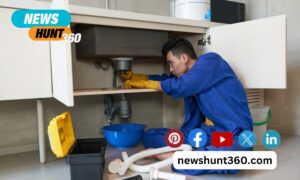There are so many benefits to using professional-standard dust extractors to clean work areas. Extracting dust from an enclosed environment is essential for worker safety in most situations, but it also helps to keep other equipment in good condition. This makes for faster work and a longer tool life, saving you time and money.
When considering dust extractor hire for a temporary job, there are lots of different systems to choose from. We’ve put together this guide to explain some of the most common types of dust extraction equipment, and to help you narrow down your options to decide which dust extraction system is best for your needs.
Which dust extractor class do I need?
First of all, you’ll need to know which dust category you want to clean up and remove. There are three possible categories determining the type of dust the extraction system can handle. Britain’s regulator for work-related health and safety, HSE, offers in-depth guides on dust classifications and the appropriate extraction systems for specific trades.
Here’s a general summary of dust classifications which dust extraction systems should be rated with:
| Hazard levels | Concentrations | Materials |
| L Class (Low) | ≤ 1.0% Dusts with maximum allowable concentrations (MAC) > 1 mg/m³ | Soft woods, solid surface material e.g. Corian, small amounts of graphite |
| M Class (Medium) | < 0.1% Dusts with maximum allowable concentrations (MAC) ≥ 0.1 mg/m³ | Hard woods, board materials, concrete, quartz, brick |
| H Class (High) | < 0.005% Dusts with maximum allowable concentrations (MAC) < 0.1 mg/m³ | Carcinogenic dusts*, asbestos, formaldehyde, mould, bacteria |
*Carcinogenic dusts include but are not limited to lead, carbon, tar, nickel, copper, cobalt, and cadmium.
M Class is the minimum legal requirement for industrial and commercial settings. You should always check that an extraction system is suitable for the types of dust your project is producing before hiring it. Not only does it put people at risk to use the wrong type, HSE could issue a fine for misuse.
Which type of dust extractor should I hire?
Once you know which dust classification to look out for, you can decide which type of dust extraction system is the best fit for your scenario. These are some of the widely available types of dust extraction units you could hire.
Air filtration unit
Suitable for commercial workshops, medium to large air filtration units can be wall-mounted wherever you need them and remote-controlled with multiple speeds and time settings. These units have a pre-filter with an electrostatic charge, then a main filter of pleated cloth to separate microscopic particles of airborne dust. If your work produces explosive dusts, double-check whether the air filtration system can handle this.
Dust extraction vacuum
For smaller projects when you prefer to manually move the extraction unit around during or after the work, a compact and portable dust extraction vacuum will come in handy. Its automatic filtration systems are efficient for M Class dust, and they can often be used in situations with both dry and wet dust, with capacities over 25 litres.
Hazardous dust vacuum
H-rated dusts that are hazardous to human health require a dust extraction unit specifically designed to safely remove them. A hazardous dust vacuum can reliably remove harmful dust deposits with three-stage filtration levels up to 99.997%. They’re usually available in capacities from 10 to 35 litres and sealable for secure disposal of dust bags.
Dust extractor unit
A purpose-built dust extractor unit can separate dust from the airflow in various particle sizes according to the inlet size, including metal dusts. The filtered particles fall into either a primary or secondary bin, which are accessible through a drop-down door for easy removal. If you need to move the unit around, it’s better to go for a mobile dust extractor unit on castor wheels.
Bin shaker filters
These self-contained units automatically discharge the collected dust particulates into waste sacks or bins via a hopper or flange. They come as single bin, twin bin, or three-bin stations for smaller or larger amounts of waste. Bin shaker filters can handle coarse, medium, and fine dust with a variety of filter areas and unit sizes available.
Wet wash dust filtration
Does your fabrication process create fibrous dust that’s difficult to deal with? A wet wash filtration system is designed to handle a range of sticky dusts without dust explosions or blockages. These highly efficient extraction and filtration machines can be used outside if weather-protected and have a removable door for sludge removal.
Downdraught bench
Cabinetry and furniture workshops can benefit from downdraught benches to capture dust from hand sanding in a tray which can easily be pulled out for disposal. Dust is drawn down through rubber grommets in the work surface and captured by pleated filters. For power sanders, dust should be extracted at the source.
Extraction arms
If you need to connect single or multiple workstations to a central extraction and filtration unit, flexible extraction arms are the ideal solution. With lengths of around 2-4 metres and ranges up to 10 metres with 2-3 joints available, extraction arms can continuously remove fumes, gases, and light airborne dusts from a specific area within a larger enclosed space.
Which dust extractor is best?
Now you know more about the various methods of dust extraction, you should be able to make an informed decision about which dust extractor you need to hire. Remember to always take the dust type, area size, mobility, and working habits into account when choosing the best dust extractor to hire for your project.




